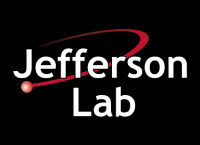Generic EIC-related Detector Research and Development Program Description
Under the Auspices of the Electron-Ion Collider Program
Managed by Thomas Jefferson National Accelerator Facility
The Office of Nuclear Physics (NP) intends to support researching and developing technologies suitable for detectors the Electron-Ion Collider (EIC) may incorporate. A generic EIC-related detector research and development (R&D) program would evaluate opportunities to achieve new cost-effective detector capabilities that reduce risk. Such a program would not duplicate, but would instead synergize, with the Small Business Innovation Research (SBIR) and Small Business Technology Transfer (STTR) programs administered by NP through the Department of Energy, Office of Science.
The NP supported EIC project scope includes one detector known as the reference detector. This program would support advanced R&D on innovative detector concepts that either the one detector in the project scope or a second detector could incorporate. The term generic conveys this duality. The EIC User Group authored Yellow Report includes requirements for both detectors. The envisioned generic EIC-related detector R&D program would build off the similar program administered by Brookhaven National Laboratory in association with Thomas Jefferson National Accelerator Facility between 2011 and 2021.
A successful generic EIC-related detector R&D project will span a year or more and would pursue one or more alternate detector technologies intended to enhance EIC capabilities in addressing new nuclear physics opportunities cost effectively. Detector functionality areas of interest include:
- Particle identification reach at higher momenta and wide rapidity coverage;
- Calorimetry, including:
- Hadronic calorimetry resolutions,
- Large-scale production and low-energy photon detection efficiency of possible glass-based electromagnetic calorimetry,
- Zero-degree calorimeters, or,
- Other means to improve spatial or timing resolution of collision events;
- Tracking; and,
- Readout electronics, including:
- Silicon photomultipliers,
- Large area picosecond photodetectors, or
- Application specific integrated circuits for streaming modes.
Proposals will undergo a merit-based review process conducted by Thomas Jefferson National Accelerator Facility with input from members of the nuclear physics community not employed by the laboratory administering the program. Successful generic EIC-related detector R&D projects should highlight how the work would advance diversity, equity, and inclusion initiatives of the proposing institutions. Cost effectiveness includes consideration of carbon footprints, supply chain challenges, and priority on domestic supply sources.


